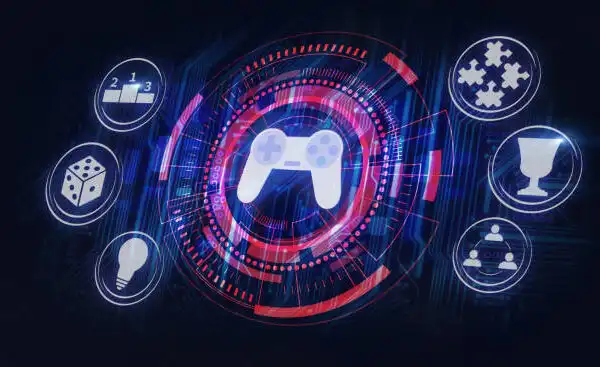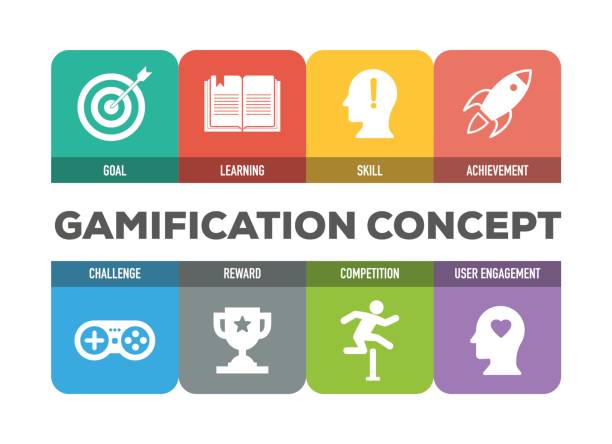
L&D: Gamification Strategies for Employee Engagement
Bored and disengaged employees mindlessly clicking through yet another mandatory training module. We’ve all been there, right? As learners, we’re hardwired to crave engagement, problem-solving, and a sense of progress.
Yet most corporate L&D programmes fail to deliver this, resorting to passive videos and death-by-PowerPoint presentations.
But what if learning felt like an exciting video game — with challenging missions to accomplish, new levels to unlock, and leaderboards to climb? This immersive experience is the promise of gamification.
According to research carried out by Zippia, 90% of employees say gamification makes them more productive at work. But that’s not all, companies that use gamification are seven times more profitable than those that do not use gamified elements at work.
By artfully applying game elements like points, badges, and levels, companies can transform passive learning into an addictively engaging experience that also drives business growth.
In this article, we’ll explore proven gamification techniques to help you level up your learning and development programme.
What is Gamification in L&D?

Gamification refers to the use of game design elements in non-game contexts. It involves applying elements like points, badges, leaderboards, and progression levels to drive participation and engagement in activities like learning.
Importantly, gamification is not just about introducing fun games or playful content into learning. The games need to be intentionally designed and aligned with curriculum goals.
For example, learners can earn badges for completing courses, gain points for passing assessments, unlock new content by reaching certain levels, and compete on leaderboards. The goal is to leverage people’s natural desire for competition, achievement, and progression to motivate them to learn.
While still an evolving approach, gamification has been increasingly adopted in corporate L&D over the last decade. Research indicates that proper gamification results in higher engagement, knowledge retention, completion rates, and learner satisfaction compared to traditional instructional formats.
Benefits of Gamification for Employee Engagement

Gamifying learning and development programmes offer several benefits that directly impact employee engagement and business results:
- Increased motivation and participation
The points, leaderboards, challenges, and rewards in gamified training tap into learners’ intrinsic motivations for mastery, achievement, and competition. Employees are driven to voluntarily participate as they collect rewards, level up skills, and compete on leaderboards. This boosts engagement.
- Greater knowledge retention
Gamification introduces elements like quests, spaced repetition, storytelling, and scenario-based assessments which reinforce learning through applied practice. According to Gabe Zichermann, author of Gamification by Design, gamification increases employee skill retention by approximately 40%.
- Increased productivity
While gamification increases the productivity of 90% of workers, it also increases on-the-job engagement levels. For instance, a survey of 500 business workers found that 30% of respondents said that gamification leads to an increased desire to be engaged while at work.
- Positive learner experience
Fun, engaging training creates an energising learner experience. This leads to higher course completion, learner satisfaction, and engagement. Employees develop a growth mindset rather than viewing training as a chore.
- Improved collaboration and teamwork
Communal goals, group competitions, and social rewards provide opportunities for collaboration. Bonding over shared challenges and victories fosters teamwork. This positively impacts work culture.
How to Choose the Right Gamification Elements

When implementing gamification in learning and development, it’s important to choose the right game mechanics that align with your goals and learners. Here are some tips:
- Match mechanics to learning objectives
Start by clarifying the specific skills, knowledge, behaviours, or cultural attributes you aim to nurture through training. Then handpick game elements that explicitly reinforce those outcomes. For example, if the goal is to train sales teams on product features, a memory challenge matching game drives retention better than generic leaderboards.
- Consider generational and personality differences
Gamification motivators differ across age groups and personality types. For instance, praise and recognition as rewards work well for Baby Boomers while Millennials and Gen Z thrive on healthy competition. Surveying learners can reveal generational or regional cultural nuances to inform your design. Provide a blend of individual achievement and collaborative activities.
- Integrate seamlessly into existing infrastructure
Audit how gamification can integrate into your learning management system, training delivery, and performance tracking workflows. Start small by gamifying parts of a programme first. Build on existing training architecture incrementally — don’t overhaul overnight. Pick simple mechanics like points and badges that are easy to implement at the outset.
- Align game elements to company values and culture
Choose mechanics that map your company’s cultural values and brand personality. For example, if teamwork is a core value, incorporate group quests, collective rewards and social engagement aspects. For innovative cultures, sandbox-type challenges to unlock new product features build the right behaviours.
- Gauge capability and allocate resources
Objectively assess the readiness of your L&D team to design and manage gamified learning. Liaise with developers early if building custom solutions. Make sure to allocate sufficient budget and automate where possible so it’s scalable. Change management will also be required to onboard employees.
Tips for Implementing Gamification in L&D
- Get executive buy-in by connecting gamification to business outcomes
- Start with a pilot programme before company-wide rollout
- Set clear guidelines and expectations for learners upfront
- Train L&D team members on gamification tools and concepts
- Focus gamification on high-priority skills/behaviours
- Track learner analytics and fine-tune game elements continuously
- Maintain relevance by updating quests and rewards over time
- Reward participation, not just winning
Leveling Up Your L&D Programme
Implementing gamification strategies requires thoughtful design, alignment with company goals, and change management. But the effort pays dividends in elevated employee engagement, productivity, and retention.
In the world of work, an engaging, rewarding experience is the new currency for winning top talent. Gamification makes learning fun again. Instead of “just another training”, employees feel a sense of adventure and purpose. They connect with peers over shared missions, unite around common goals, and take charge of their own development.
The principles of game design provide a framework to craft truly immersive learning. Games tap directly into the human need for growth, mastery, meaning and social connections. Gamification works precisely because it feels less like work, and more like a calling.
While adoption is still evolving, leading companies are already using gamification to nurture cultures of learning and high performance. Will you embark on the quest to level up your L&D programme? The first step is getting in the game.










